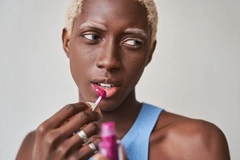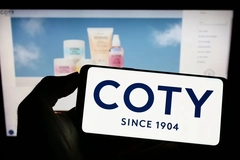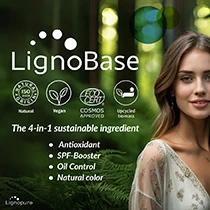Researchers develop green technology for cocoa-based cosmetics amid tightening biodiversity policies

16 Dec 2022 --- A study on the cosmetic applications of cocoa by-products argues that subcritical water extraction methods for cocoa hulls are price competitive with standard techniques, which can ensure the development of the personal care industry within environmental, social and governance (ESG) criteria.
Although the findings point to a greener future, uncertainties continue to pervade the personal care space as greener formulation methods, nature-based products and environmental sustainability does not necessarily exclude the exploitation of nature.
According to Innova Market Insights analyst Xihan Ma, naturalness is a “hot topic” in the personal care industry and is likely to remain one for the coming years; “45% of makeup users globally claim that a ‘natural product’ is one of the most appealing makeup trends to them,” she tells PersonalCareInsights.
As the demand for natural products containing ingredients like palm oil, shea nut extracts and cocoa extracts increase, so will the agricultural developments and production, which inevitably threatens wildlife and natural habitats.
Green cocoa cosmetics
The researchers hold that subcritical water extraction, as opposed to methods using organic solvents, is less expensive, safe for the environment and can be applied in the food, cosmetics and pharmaceutical industries.
 Child labor remains an endemic issue in some global supply chains.According to the study, “the application of advanced green technologies, [...] ensures the development of the cosmetic industry within the ESG criteria, which nowadays is among the most important tools for company screening by potential investors.”
Child labor remains an endemic issue in some global supply chains.According to the study, “the application of advanced green technologies, [...] ensures the development of the cosmetic industry within the ESG criteria, which nowadays is among the most important tools for company screening by potential investors.”
The study evaluated the potential of applying cocoa hull extracts to cosmetic formulations and did so through a subcritical water extraction method, which is a type of green technology, according to the study.
Beans from the Ivory Coast, Ghana, Togo and Grenada were used in the extraction process and antioxidant and antiradical activity was determined and compared for all extracts.
Those with the highest antioxidant and antiradical activity were used in cosmetic formulations of functional products, including but not limited to a day cream with UV-protective properties.
In order to confirm the possible applicability of the cocoa extracts obtained by this green technology to the personal care industry, the researchers subjected the cream to “basic quality parameters” and concluded on the “safety of the newly developed product based on subcritical water extracts of cocoa hull.”
The study was carried out by researchers from the University of Novi Sad, Serbia, Volgograd State University, Russia and Requimte-LAQV University, Portugal.
Preserving biodiversity
In addition to these, many ethics are put under pressure as agricultural practices – mostly in developing countries – oftentimes include less than living wages and long working days, with some big industry players like Unilever also conceding that “child labor remains an endemic issue” in some of its global supply chains.
“Along the entire supply chain – from farming, raw material sourcing, working conditions and wages paid to manufacturing, energy supply, transportation and distribution – companies can actively contribute to respecting biodiversity and people,” the French Fédération des Entreprises de la Beauté (FEBEA) says in its biodiversity preservation guide.
It highlights that a significant portion of the ingredients used in cosmetic compositions come from biodiversity and the federation continues to galvanize “governments and other stakeholders, including businesses, to reverse the biodiversity crisis that affects us all.”
Government action for nature protection EU authorities reached an agreement on regulations that will oblige operators to identify the source of their products.
EU authorities reached an agreement on regulations that will oblige operators to identify the source of their products.
The US government released a statement acknowledging the need to act against the exploitation of nature in cosmetic spheres. “Humanity is fighting for our future against climate change and nature loss. And a third crisis – an inequitable world – amplifies the urgency,” it reads.
The statement points out that significant challenges remain in deploying nature-based solutions for the climate problem, saying that “current policies and regulations can create unintended hurdles.”
“Many communities find funds for nature-based solutions insufficient and difficult to navigate. When funds do flow, the workforce to design and build nature-based solutions lags in some places, or simply doesn’t exist in others. Technical challenges can make investors hesitate or delay permitting. Effective use of nature-based solutions will require removing these roadblocks.”
A recent temporary agreement between the European Council and the European Parliament might offer a glimmer of hope. The deal aims to reduce the risk of deforestation and forest degradation brought on by the expansion of agricultural land used to produce imported or exported goods.
The bodies reached an agreement on regulations that will oblige operators to identify the source of their products. There will be more scrutiny and perhaps sanctions for those who source from areas where there is a significant danger of deforestation.
An EU official explains that “the new rules will not only reduce greenhouse gas emissions and biodiversity loss, but also help secure the livelihoods of millions of people, including indigenous peoples and local communities across the world, who rely heavily on forest ecosystems.”
As bills such as these are passed in order to protect the environment from agriculturally-induced exploitation – even in the name of nature-based formulations – the fight against climate change, nature loss and inequity can be aided by new technologies and studies to bolster sustainable raw material use.
By Mieke Meintjes












